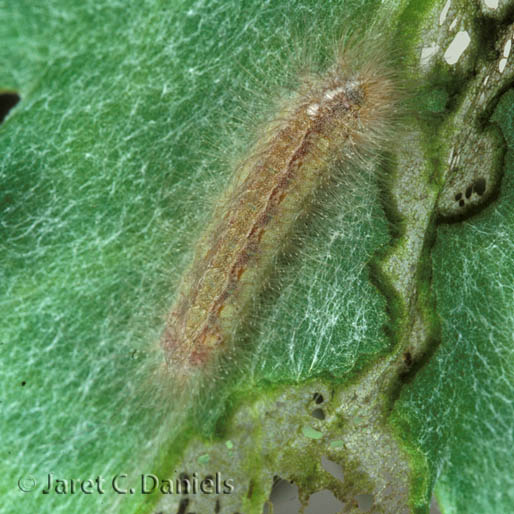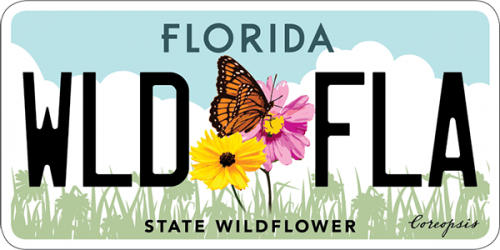- Family name: Riodinidae/Metalmarks
- General description: orange-brown with black markings and two narrow metallic silver-blue bands. Ventral wing surfaces as above but lighter orange. Forewing apex more rounded in females
- Field Marks: small; orange-brown with metallic silver-blue bands.
- Sexes: appear similar
- Wingspan: 15-25 mm
- Life Cycle: Egg: laid singly on host leaves Mature larva: light green with long plumelike white hairs Chrysalis: green and cream with darker markings
- Number of Generations: multiple

- Flight Season: All
- Abundance: Common
- Habitat: moist meadows, roadsides, pine savannahs, grassy fields, forest margins
- Larval Host Plants: yellow thistle (Cirsium horridulum)
- Similar Species:
- Additional Information: adults flutter very low to the ground; perches with wings open and periodically lands on the undersurface of leaves; colonies often local
- Range in Florida
 The Florida Wildflowers & Butterflies projects at the Florida Museum are sponsored in part by the State of Florida and the Florida Wildflower Foundation, Inc.
The Florida Wildflowers & Butterflies projects at the Florida Museum are sponsored in part by the State of Florida and the Florida Wildflower Foundation, Inc.
